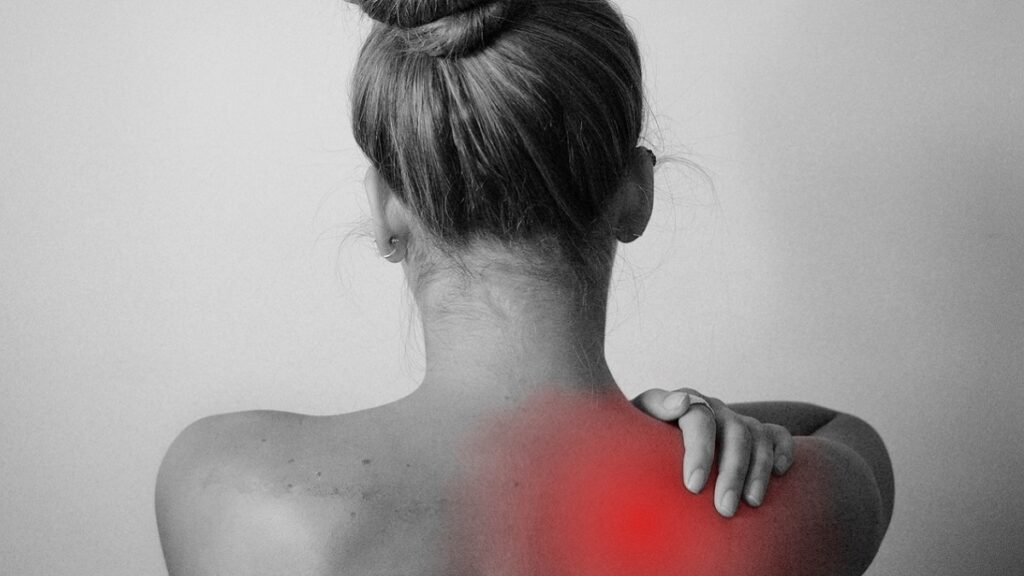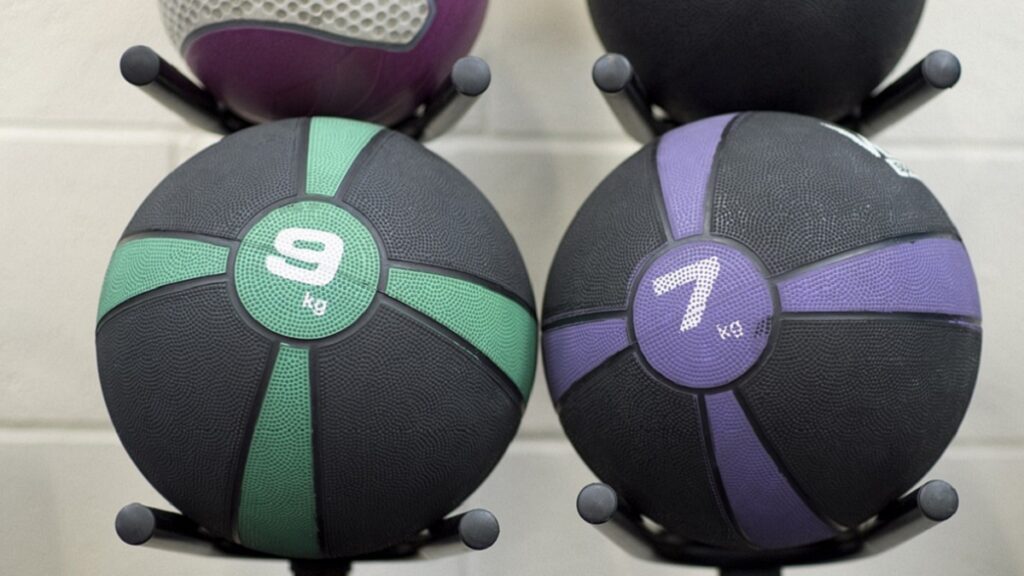Living in the 21st century means exposure to many shoulder injuries. That is because we spend too much time on our phones and computers, which causes bad posture. Sitting on a desk for long work hours causes shoulder pains and requires blackburn shoulder exercises for correction.
Blackburn shoulder exercises include prone horizontal extension, prone horizontal abduction, and scaption on the wall. Blackburn exercises work the shoulder blade muscles to retain fitness and reduce pain. Other exercises, such as the barbell overhead press, hit all shoulder muscles quickly.
The Blackburn exercise is one of the best ways of treating shoulder pain, regaining adequate mobility, and reducing awkward movements. These stretching and strengthening scapular movements increase muscular strength and joint position awareness.
This article covers the best Blackburn shoulder exercises to restore your shoulder stability. So, keep reading.
What Are Blackburn Exercises?
Blackburn exercises are corrective exercises that assist in maintaining the shoulder in the correct posture for good functioning. The shoulder joint’s kinematics is altered greatly, making it more vulnerable to injury if the shoulder is dragged forward by a tight subscapularis muscle and weak scapular stabilizers.
Most of these exercises are soft since they are also mainly helpful for shoulder rotator cuff recovering patients.
Looking at the shoulder blades is one of the simplest methods to determine if someone is at risk for a shoulder injury. Why? The shoulder is healthy if the shoulder blades rest against the rib cage and move smoothly along it.
However, you are on thin ground if the shoulder blade is torn away from the rib cage.
An intelligent approach to promote adequate shoulder flexibility, rear delt engagement, a low back, and an extended vertebral column is to perform Blackburn shoulder exercises to replicate your overhead press pattern. While at it, ensure that you are not putting any vertical stress pressures on the vertebrae or shoulder capsule.
Blackburn Shoulder Exercises
Blackburn shoulder exercises are great exercises for shoulder rehabilitation. Perform Blackburn shoulder movements that resemble your overhead press pattern to promote shoulder flexibility, rear delt stimulation, a neutral lower back, and a stretched thoracic spine.
Be sure not to put vertical stress pressures on the spine or shoulder capsule. In addition, secure your heels in the glute-ham raise or horizontal back extension machine to increase the strain you can exert via the complete posterior chain instead of using the floor or an unsecured bench.
Both isometrically and isotonically, it makes everything between the back of the knees and the rear delts work extremely hard. These Blackburn shoulder exercises are the most effective for acquiring desired shoulder fitness.
Prone Horizontal Abduction (Full External Rotation)
Assume the “hitchhiker position” by lying face down on a workout table with your arms straight down by your sides and your thumbs pointing upward.
Hold for two seconds, then slowly drop your shoulder until it is parallel to the ground.
Scaption On Wall
Place your hands in the Y shape on the wall in front of you as you stand. Then, pull back and down on the shoulder blades. Hold this posture while lowering your arms to your sides. Go back to the start position.
Keeping the shoulder blades back and down, reverse the movement while maintaining the initial posture.
Quadruped Alternate Arm and Leg – Bird Dog
Brace your abdominal muscles while crawling, then slowly lift one leg and the opposite arm. The leg and arm should be lowered before repeating on the other side.
Keep your spine and pelvis level the entire time.
Prone Horizontal Scaption (Neutral)
Lie face down on a workout table with your arms dangling straight to the ground and your palms upward.
As opposed to horizontal abduction, extend both arms to the sides (just a little bit) in front of you by around 30°.
Hold for two seconds, then gradually let go.
Prone Horizontal Scaption (Full Er)
Place a mat on a workout table and lie on it face down. Allow your arms to hang straight down and your thumbs to point upward. This position is also known as a hitchhiker.
Instead of being in the horizontal abduction posture, raise your hands to the sides. Let them be forward by approximately 30 degrees.
Hold for two seconds, then gradually let go.
Prone Horizontal External Rotation
Lie with your face on a workout table, your elbows bent at a 90-degree angle, and your arms extended to the side.
Externally rotate your arms so your forearms point forward and parallel to the ground. Hold for two seconds before lowering slowly.
Prone Horizontal Extension
Lie (face down) on a workout table with your hands facing forward and your arms dangling straight down.
Raise your arms so they are horizontal and parallel to your thorax. Hold for two seconds, then slowly lower them.
How to Do Blackburn Shoulder Exercise Like a Pro!
Each of the six holds in the Blackburns shoulder exercises series is held for ten repetitions of 6 seconds. Increased time under stress and faster muscular contractions are benefits of the isometric 6-second hold.
With these holds, you must tightly squeeze your shoulder blades for 6 seconds. If you are performing it correctly, you should feel a sharp burn in your upper back and shoulders.
If you start doing these regularly, your posture will noticeably improve after a few weeks, and your shoulders might even feel more steady. You will also notice a significant difference in your throwing or serve velocity if you are an overhead athlete.
What Exercise Hits All Shoulders?
The overhead barbell press, which many believe to be the most crucial compound exercise for developing upper body strength, is the cornerstone of any effective shoulder fitness routine. Although the anterior deltoid is primarily targeted in this exercise, the medial and posterior deltoid muscles are also included to create a balanced shoulder movement. Other exercises that hits all shoulders include:
- Overhead Barbell Press
- Laying Back Delts Raise
Overhead Barbell Press
Have the barbell about your chest level and your hands facing forward. This is the appropriate starting position for an overhead barbell press, whether standing or seated.
Next, push the barbell above your head to a place just in front of your torso while maintaining a shoulder-width apart grip before closing your arms.
The overhead barbell press, which many believe to be the most crucial compound exercise for developing upper body strength, is the cornerstone of any effective blackburn shoulder exercises routine. Although the anterior deltoid is primarily targeted in this exercise, the lateral and posterior deltoids are also included to create a balanced shoulder movement.
Have the barbell about your chest level with your hands facing forward, as is the most appropriate starting position for an overhead barbell press, whether standing or seated. Push the barbell above your head to a point just in front of your torso while maintaining a shoulder-width apart grip before closing your arms.
Laying Back Delts Raise
Train the rear delts last in the exercise, only doing a few sets. The majority of back exercises work the rear deltoids. Thus, less effort is required. Alternatively, you can use dumbbells once more.
In either case, you perform this exercise the same way you would a reversed chest fly. Since this is a feel exercise, lighter weight is advised.
What Is the Number 1 Best Blackburn Shoulder Exercise?
The number one best Blackburn shoulder exercise is the prone horizontal abduction. To perform the exercise, follow these steps.
- Lie face down on a workout table with your arms extended straight to the floor.
- Keeping your palms down, raise your arms until they are parallel to the ground.
- Hold for two seconds, then slowly lower them.
What Are 3 Shoulder Exercises?
Alongside the Blackburn shoulder exercises that work out the major shoulder muscles, here are three other exercises that hit all the shoulders. Additionally, you can build your chest and back faster with the right shoulder exercises.
- Pullover and Raise the Front
- Side Lateral Raise when Seated
- Rowing a Smith Machine Vertical
Side Lateral Raise when Seated
My favorite exercise to target the side delts is the side lateral raise. You can execute this workout using dumbbells or a low pulley cord. Since you want to be able to lift as much as you can, you should typically start your routine with this exercise.
However, always maintain form when lifting large objects. Too many folks are either not raising enough weight or are performing this movement improperly. Remember to lift the dumbbells as high as your shoulder while maintaining a tiny bend in your elbow.
Pullover and Raise the Front
The front raise is a routine that gets overlooked. The rationale is that you will only draw attention to yourself while performing the exercise. To burn the front delts, you employ a variety of techniques.
My two favorite exercises are alternating dumbbells and the low cord pulley with a shorter bar. It can be done while gripping a plate in the same manner as a steering wheel. The trick to this exercise is to lift the weight slightly above shoulder level while maintaining a minor elbow flexion.
Rowing a Smith Machine Vertical
Here, you perform the front delts, side delts, and traps. Use a low cable pulley, a barbell, or dumbbells as resistance for rowing a smith machine vertical exercise. Due to the constant stress, I choose the common cable.
The secret is to tighten up at the top of the movement and hold for one beat. The shoulder shrug also works the traps, but that is it. I advise beginners to start with the upright row because it engages many muscle groups.
When supplemented with the Blackburn shoulder exercises, these three exercises will help you avoid injuries.
How Do You Strengthen Your Shoulder After Rotator Cuff Injury?
A workout conditioning program will assist you in getting back to your regular routines and living a more active, healthy lifestyle following a rotator injury or surgery. You will also be able to get back to sports and other leisure activities by adhering to an organized conditioning program.
This program for general conditioning offers a variety of workouts. Under your doctor’s supervision, follow the rehabilitation program to ensure it is secure and efficient.
By strengthening the muscles supporting your shoulder, you can also maintain the stability of your glenohumeral joint. Maintaining the strength of these muscles can ease shoulder discomfort and stop additional harm.
So, after suffering a rotator cuff tendinopathy injury, you can strengthen your shoulder by performing the exercise below.
- Place your feet shoulder-width apart as you stand. Put a resistance band on one end beneath the foot across from the affected arm. Hold the opposite end with the wounded arm so the bar crosses your body diagonally.
- Lean slightly at the waist so the hand gripping the band is parallel to the opposite leg. While at it, keep the left hand on your hip without closing your knees.
- Straighten up and bring your elbow to the outside of your ribcage, as if starting a lawnmower in slow motion. As you stand, maintain a good posture and push your shoulder blades together.
- Do three sets of 10 reps.
When to see a doctor…
After a minor injury, these workouts can help you gain strength, but a significant or reoccurring problem needs more attention. If you notice:
- Severe aching pain, swelling
- Having trouble raising your arm
- After your injuries, you have difficulty falling asleep on your arm for several days.
These are signs of a more severe wound.
How Many Times a Week Should I Train Shoulder?
The most popular strategy, supported by the most recent recommendations on training frequency, involves doing blackburn shoulder exercises at least twice a week.
Depending on your stage of development, recommendations for training intensity and frequency will apply to both men and women.
Training age, recovery capacity, sets and reps per session, weekly training volume, and overall goals are just a few factors that affect how frequently you should train. A typical approach for those seeking to grow their shoulders is to train them MORE, which may or may not be the optimal course of action.
Therefore, you must decide how many dedicated Blackburn shoulder exercises you want to undertake each session when considering how frequently you should train the shoulders.
How Many Shoulder Workouts Should I Do in a Day?
It changes based on several variables, such as your fitness level and goals. According to reliable studies, the more weekly sets you accomplish, the more muscular hypertrophy (or size increase) you will notice.
Sure, the tasks of your scapular muscles overlap, and some workouts work in different shoulder regions. For instance, the overhead press will work your front and lateral delts.
Additionally, various workouts you already perform may work your shoulders as well. Shoulder pressing works your front, and any rowing exercise works your rear. As a result, the number of sets you require solely for heavyweight shoulder exercises may change.
Therefore, train your shoulders by performing at least ten sets of blackburn shoulder exercises each week for each of the three distinct shoulder components. However, be mindful of eventual overlap.
Is 2 Shoulder Exercises Enough?
Two-shoulder workouts may be necessary to develop powerful, well-defined shoulders. As long as they receive enough training volume every week (15-20 total sets for most people would be enough), most people can see excellent results doing 2-4 different exercises.
Each exercise should target each muscle group per training day and include 4–12 workouts per muscle group per week.
Depending on your goals, anywhere from one to three sets of each exercise might be beneficial. Also, one exercise for each muscle group can produce improvements.
Staying with a few basic exercises and focusing on your repetitions and sets to increase strength is preferable. Getting bigger is your goal. So, you should vary your workouts more and spread out your reps and sets.
Do Blackburn Shoulder Exercises Help?
If correctly and consistently done, blackburn shoulder exercises help. One of the most common ways they help is by strengthening all the muscles that surround the shoulder. One such muscle is the scapular stabilizing muscles.
Other muscles and joints that benefit from this shoulder exercise include rotator cuff and the glenohumeral joint, respectively. The glenohumeral joint benefits by becoming more stable, hence eliminating dislocation issues.
So, if you are a victim of frequent joint dislocation, it would help if you tried shoulder exercises. Besides dislocation, shoulder exercises also help to safeguard the bones round your shoulders against fiction or impact.
As with every other workout, blackburn shoulder exercises make you happy. Resultantly, your body releases natural painkillers (endorphins).
Conclusion
Exercises to strengthen the shoulders or scapula can help to improve posture and muscle function while encouraging healthy movement patterns. You can move more quickly and powerfully by performing these exercises regularly, which can help prevent and treat injuries.
Blackburn shoulder exercises are ideal for weak shoulder stability, bad posture, and rotator cuff issues. That will get you back in shape and allow you to continue your weightlifting and athletic endeavors.



